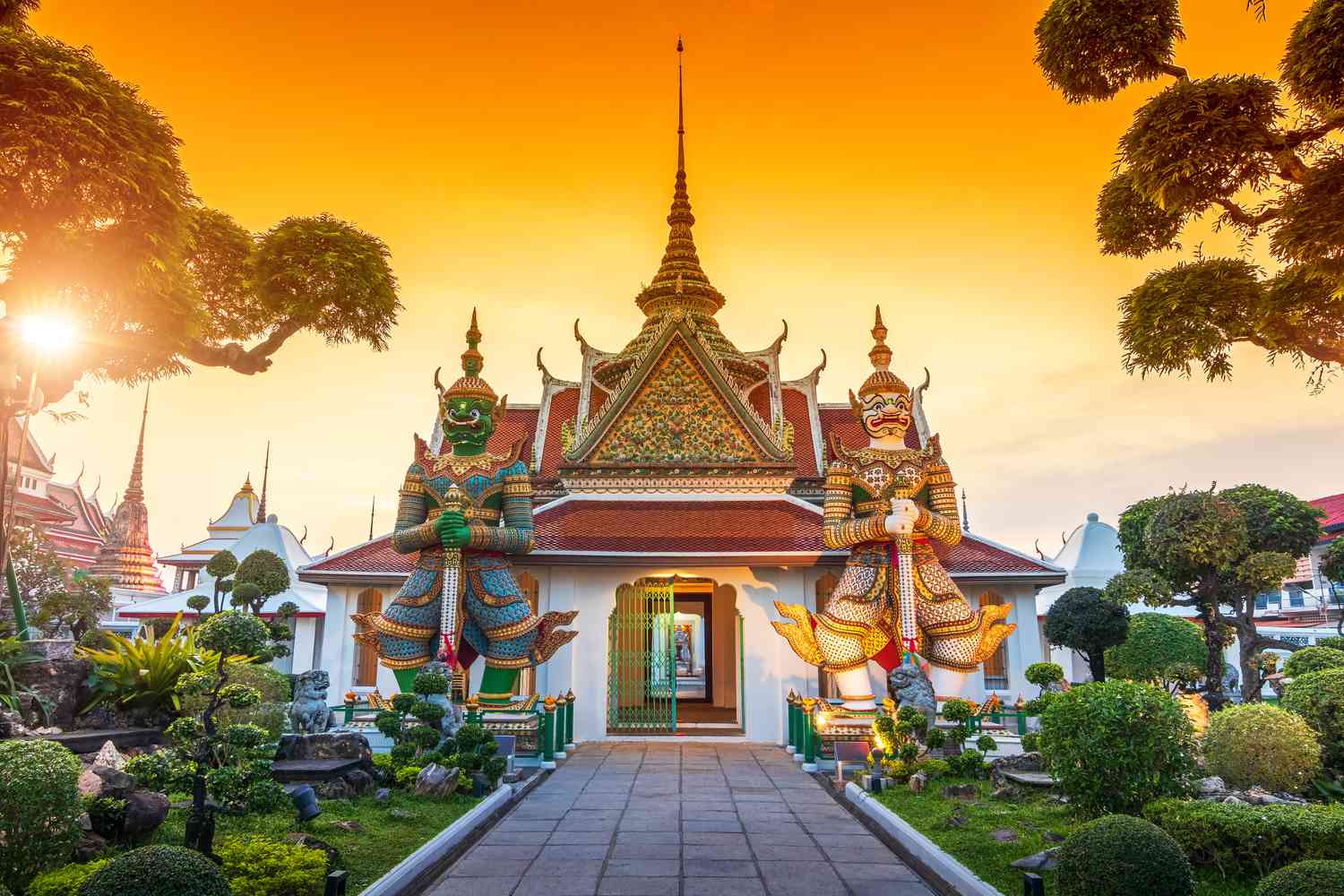Theravada is the longest-surviving school of Buddhism, with a strong emphasis on preserving the Buddha’s teachings as they are found in the Pali Canon.
There are essentially three kinds of Buddhist structures:
1) stupas,
2) temples, place of worship somewhat similar to a church; and
3) monasteries, which contain living quarters and meditation cells for monks.
The most important buildings in Thailand, Laos and Cambodia are wats (Buddhist temples) and stupas. In Laos wats are called “vats”. In Myanmar, in Western guidebooks anyway, they are usually simply called “temples.”
What are stupas?
Stupas are solid structures bell-shaped structures that contain a holy relic or scripture. Stupas typically cannot be entered and were constructed to contain sacred Buddhist relics that are hidden from view (and vandals) in containers buried at their core or in the walls. Temples have an open interior that may be entered and in which are displayed one or more cult images as a focus for worship.
Theravadan stupas symbolize the Buddhist concept of the universe. The solid dome that rises up from the square or circular base is a representation of the dome-shaped sky enclosing the world-mountain, which pierce the dome to form a small balcony at the summit. At the center of the dome is a mast that represents that axis of the earth which rise from the waters that surround the world up to the cosmos. Square bases often also symbolize the earth. The shape of stupas may have been inspired by the staff and begging bowl of the wandering Buddha.
The objects inside stupas are often unknown.
What are temples?
Temple is a place of worship somewhat similar to a church whole monasteries are living quarters and meditation cells for monks.
Local temples are essentially self sufficient and rely on their own lands and support from the local lay community to keep going. Property belongs to the community. There is not a hierarchy of priest, bishops and archbishops like there is Christianity.
Buddhist temples usually contain numerous Buddha statues. The central Buddha images are often surrounded by burning incense sticks and offerings of fruit and flowers. Some contain the ashes or bone reliquaries of popular holy man. Many Buddhist temples face south and sometimes to the east, but never to the north and west which are regarded as unlucky directions according to Chinese feng shui. Many temples are entered through the left door and exited through the right.
Interacting With Buddhist Monks and Nuns in Theravada
While interacting with monks, there are a few things to be aware of. First of all, keep in mind that monks don’t eat in the afternoon, so be mindful about eating or snacking around them.
Monks are some of the friendliest people you will meet during your travels. The monks that you see sweeping the temple stairs may be less concerned about dirt and more interested in removing the insects so that no one accidentally steps on one!
While interacting with monks, there are a few things to be aware of. First of all, keep in mind that monks don’t eat in the afternoon, so be mindful about eating or snacking around them. Secondly, if a monk is sitting, show respect by sitting before starting a conversation and avoid sitting higher than a monk if you can help it. Never point your feet at any Buddhist while sitting. Thirdly, you should only use your right hand when giving or receiving something from a monk.
Women should also be aware of the few extra rules that apply to their interactions with monks. For example, women should never touch or a hand a monk something and even brushing against a monk by accident might make them uncomfortable.
When entering a shrine, step in with your left foot first and exit with your right foot. This gesture symbolically represents a whole.
You can also practice the traditional greeting of wai, as it’s known in Thailand, or som pas, as it’s known in Cambodia. To do this, place your hands together in a prayer-like gesture and give a slight bow when greeting a monk. To show more respect, you can hold your hands higher than usual, like near your forehead.
Nearly every temple has a small metal box for receiving donations from the public. These donations keep the temple running, usually on a very thin budget. If you enjoyed your visit, giving a small amount would mean a lot. A typical donation is $1 USD or less.
See the article “Arhat – A worthy one” – click here



